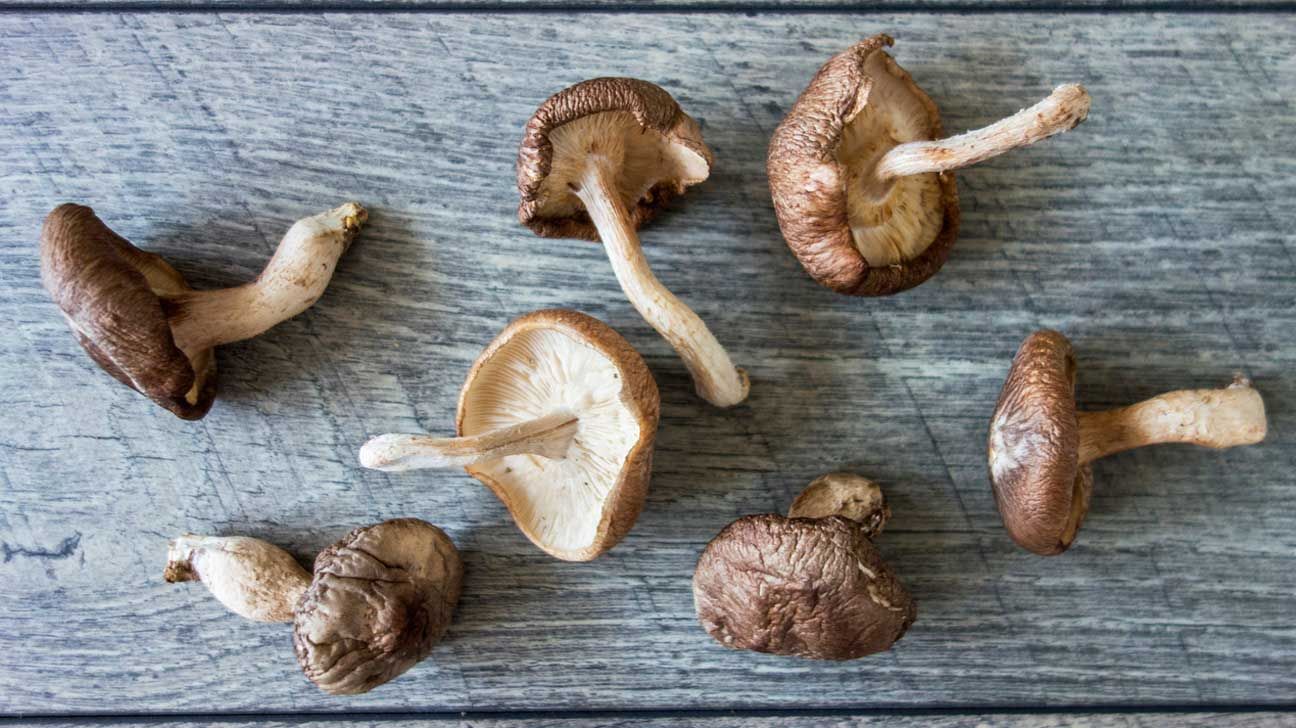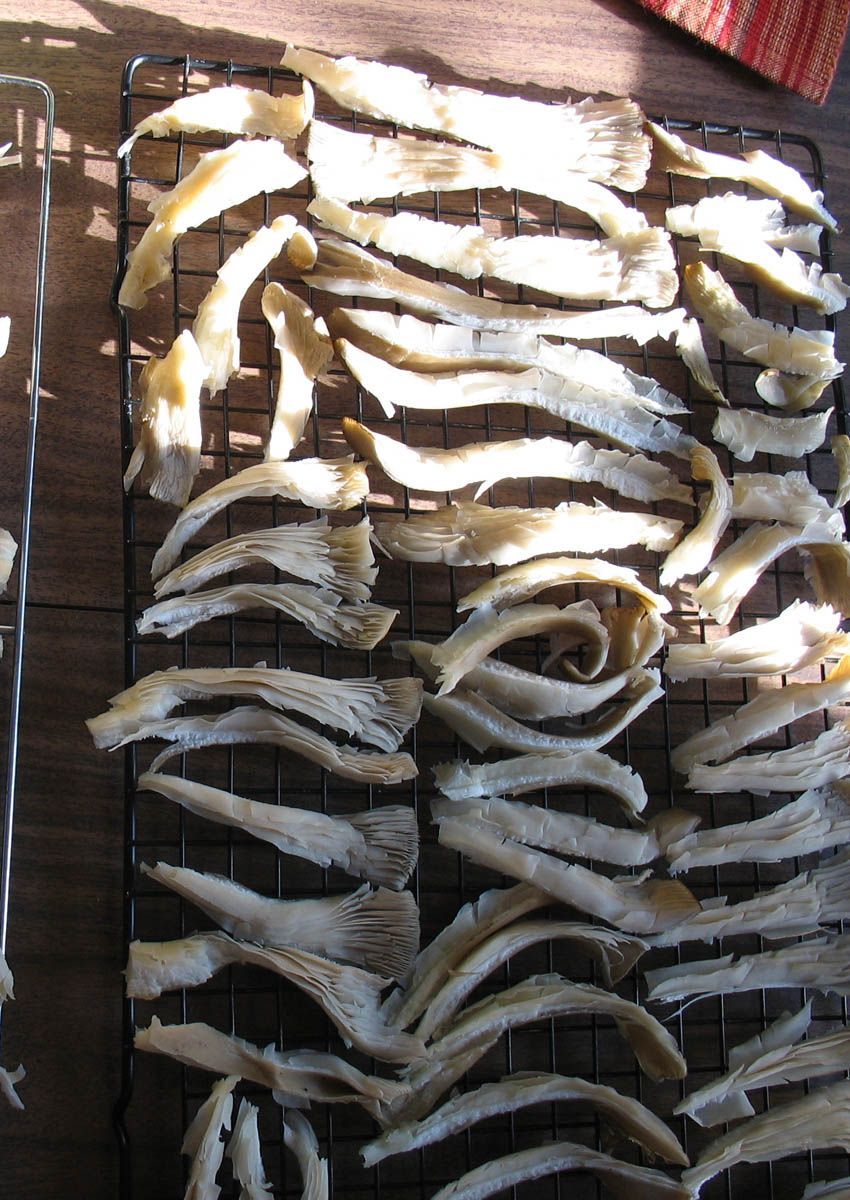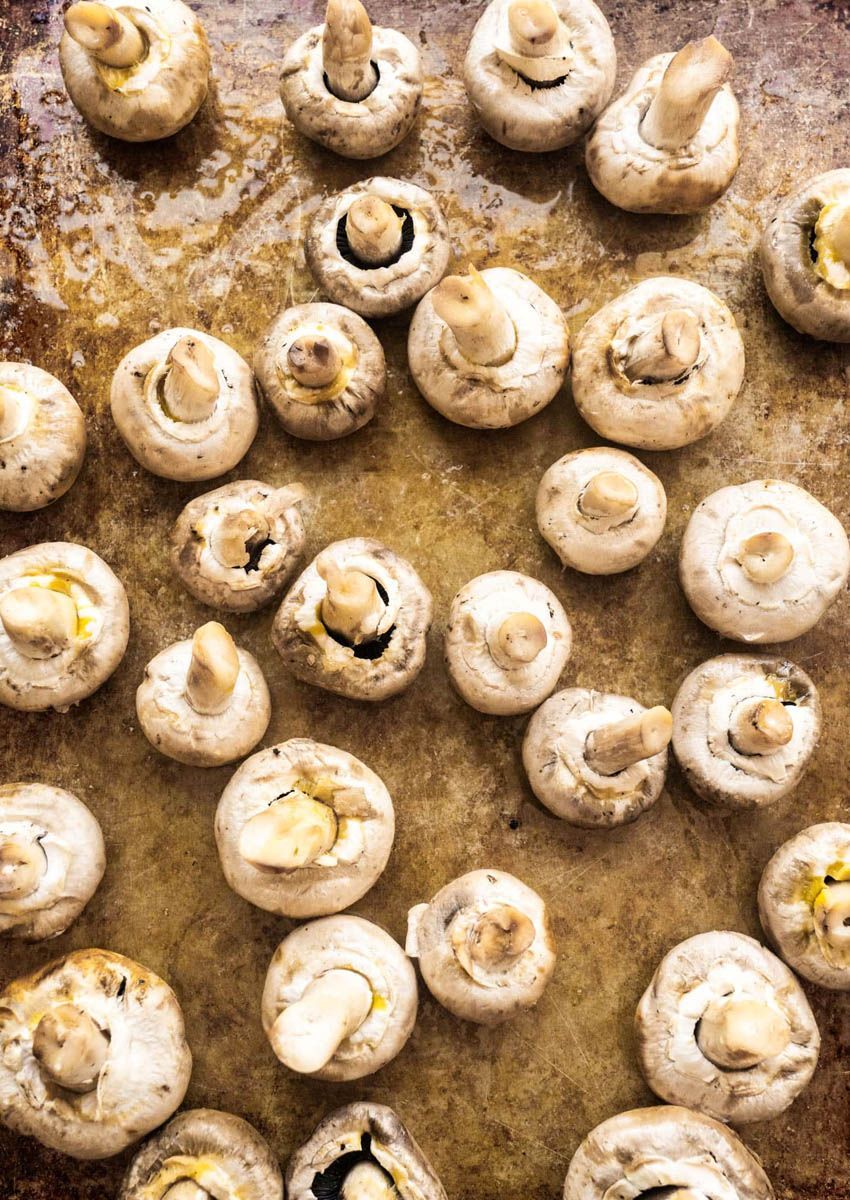Our recommendations are made independently. We may receive commissions from purchases made via our links.
How to Dry Mushrooms
Many people consider dried mushrooms superior to fresh. They last longer, taste better, and are more nutritious. So, here’s how to dry mushrooms at home.
There are two reasons why it’s worth learning how to dry mushrooms.
The first reason is that fresh mushrooms typically don’t last long. Even when you store them properly, they will only hold up for a week at most. You can keep them around for much longer by drying them.
The second reason is more pleasant. Mushrooms are valued in culinary circles due to their special umami taste. Though some foods become bland when dried, mushrooms’ flavor is instead strengthened.
All in all, drying will make your mushrooms last longer and taste better. Here’s everything you need to know about drying mushrooms.
Why Mushrooms Improve in Quality After They’re Dried
Certain edible mushrooms like shiitake (Lentinus edodes) not only last longer, but become more nutritious and better-tasting once dried.
During the drying process, the mushrooms are exposed to a lot of heat. This heat sterilizes the mushrooms of microorganisms and prevents more from growing. It also puts a stop to most of the enzymatic activities inside the mushrooms’ cells, slowing down spoilage. Last but not least, it drains away all of the moisture, which also pauses many “moisture-mediated reactions” that can lead to spoiling.

This is the reason why dried mushrooms have a longer shelf life than fresh. When properly stored, dried mushrooms can easily last 6 to 12 months.
Dried mushrooms contain a lot more nutrients — especially vitamin D2. This happens thanks to the breakdown of certain chemicals inside of the mushrooms as they dry.
Besides nutrients, the process also releases many flavor-boosting compounds. As proteins within the mushrooms break down into simpler amino acids, the umami taste is fortified. The result is a stronger, more pronounced flavor.
For all three of these reasons, dried mushrooms are just as popular as fresh. As a matter of fact, in many recipes, dried mushrooms are preferred.
The Best Ways to Dry Mushrooms
There are three different methods that you can use to dry mushrooms: air drying, drying in the oven, or drying in the food dehydrator.
Air drying is the simplest and most cost-effective out of the three. It’s as simple as leaving the mushrooms out in the open for a few weeks and letting them naturally dry out. You don’t need any kind of fancy equipment aside from a breathable basket.
The main issue with this method is time. Like we said, the mushrooms take weeks to fully dry. Aside from that, there’s also the issue of weather and mold. This method is not recommended if you live in an area with high humidity. All that moisture in the air will turn your mushrooms moldy and foul before they have the chance to dry out.
Drying in the oven, on the other hand, is quicker and more effective. You will only have to bake the mushrooms for 1 to 2 hours at most. Still, because the oven isn’t specially-made to dry your food, it’s not as safe or foolproof as the third method: drying with a food dehydrator.

A food dehydrator can take a pretty long time to get the job done (6 to 8 hours). However, it will guarantee perfect dried mushrooms in the end. The only problem is that not everyone has a food dehydrator at home, and they’re not exactly cheap.
How to Dry Mushrooms: Detailed Instructions
1. How to Air Dry Mushrooms
Take your fresh mushrooms out of their packaging and wipe each of them with a damp cloth. Do not wash the mushrooms. Once they are wet, the mushrooms will become nearly impossible to dry.

Put the mushrooms into a breathable storage vessel. Something like an unused colander will do. Give each mushroom plenty of spacing in order to maximize airflow between them — it will help them dry quicker.
Alternatively, you can arrange the mushrooms on top of drying racks.
Strategically place the mushrooms somewhere with plenty of airflow. Preferably, they should also be exposed to sunlight. The patio, an open balcony, or the window sill will do the job.
It should take a week or two for the mushrooms to dry, depending on the climate.
What Else Can You Dry With This Method?
Air drying is how people dried food before the advent of the oven, food dehydrator, or microwave. You can basically dry anything with this method.
We have discussed how to dry peppers in a different article. You can also dry herbs by bundling them together, then hang them up somewhere well ventilated. Such a technique was mentioned in our guide on how to dry rosemary.
2. In the Oven
Drying mushrooms in the oven is relatively simple.

After you’re done wiping off the mushrooms, preheat your oven to the lowest temperature that it offers. Most ovens will bottom out between 170°F to 200°F.
The most optimal drying temperatures are between 170°F and 180°F. It’s fine if your oven only goes down to 200°F, but you should be extra cautious, lest your mushrooms burn.
Lay your mushrooms on a baking tray lined with parchment paper. Arrange them so that there is plenty of spacing between them.
Put your tray into the oven and bake for an hour. Once the timer beeps, flip the mushrooms over and bake for another hour.
Visually inspect the mushrooms. They should look dried out and wilted. Give them a whiff, also. Freshly-dried mushrooms are very fragrant.
Store the dried mushrooms in a glass jar and put it somewhere cool and dry. They should last for up to a year.
What Else Can You Dry With This Method?
The oven is great for drying food. You can use the same technique as outlined above to dry many herbs, vegetables, and fruits.
It is one of the best methods to dry parsley and other fragrant herbs. Mediterranean herbs dry very well in the oven, too, as demonstrated in our guide on how to dry oregano.
3. In the Food Dehydrator
If you have a dehydrator at home, drying mushrooms won’t be much of a problem. It is the safest, most effective way to do the job.

After scrubbing the mushrooms, slice them into pieces between ½ and ¼ inches thick. Be advised — the thicker the slices, the more time they will need to dry.
Put the mushroom slices on the dehydrator tray. Give the pieces plenty of spacing.
Heat the mushrooms at 110°F for 4 to 6 hours if you sliced the mushrooms thin (¼ inches). For ½-inch-thick slices, heat for 8 hours.
Once the mushrooms are dried, give them some time to cool down to room temperature before putting them away.
What Else Can You Dry With This Method?
A food dehydrator is a universal drying tool. Any food can be dried with it. Many of our guides contain steps on how to use the dehydrator. Have a look at the article on how to dry basil and the one on the best techniques to dry dill. You can peruse any of them at your leisure and experiment with your own foods.
Conclusion
As you can see, understanding how to dry mushrooms is a great skill to have. The many superior qualities of dried mushrooms are well worth the time spent learning and testing. Try out these three techniques in the kitchen and see which one works best for you!
In the meantime, if you’re up for some extra reading, we have a few other drying guides you can look into:
- How to Dry Mint Leaves: you can do many great things with dried mint leaves. Add them into your tea and the leaves will give it a spicy flavor boost as well as some extra essential nutrients. Incorporate them into sauces and recipes and the mint’s peppery flavor will make your food taste more exotic. The following article has all of the info you need to learn how to dry mint leaves properly.
- Can I Dry Cranberries? — Best Drying Methods for Cranberries: cranberries are often eaten as a healthy snack. They are used extensively in baking, as well. By drying cranberries, you can store them for longer and extract more flavor from each berry. This guide can show you exactly how to do so.
- How to Dry Orange Slices: dried orange slices are popular as a garnish. You can use them to decorate cocktails, salads, and potpourris. They can also be eaten directly as a snack. Drying orange slices is quite simple. All of the details are available here in this article.
- The Best Ways to Dry Thyme: thyme is a bold, minty herb that sees wide usage in cookery. Like most herbs, once dried, thyme becomes shelf stable and can last for several months. Thyme doesn’t lose much of its flavor and aroma when it’s dried, either. The techniques of drying thyme are definitely worth looking into, and you can do so via this handy guide.
- How to Dry Cilantro: cilantro is the bolder variant of parsley. It has the same tangy, citrusy flavor but is significantly stronger. Some people like it, some people hate it. If you’re part of the former camp, then this guide is for you. Drying cilantro will make it last longer in storage, giving you a stable supply of the herb throughout the year.





